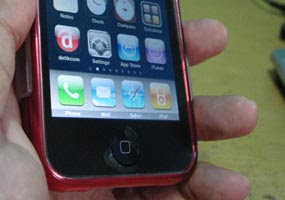
DRM-free songs can be downloaded from iTunes at a price more expensive, but it is usually the result of extraction (ripping) from the CD will be free of DRM as well. Make sure ripping made from legally owned CDs.
Not all people want to buy a ringtone for the iPhone. Many also want to make iTunes songs in his personal collection as a ringtone.
Before proceeding, please note that these tips are intended for beginners.
These tips will utilize a collection of songs that have been owned and is in the iTunes Library. Songs that can be used in this tip is just a free Digital Rights Management (DRM)
Okay, here is a simple way to get free ringtones on the iPhone by exploiting a collection of songs in iTunes:
1. Open iTunes
2. Find songs in iTunes collection who want to be a Ringtone
3. Listen to the song, and find the part you want to use.
4. Record the start time and end of pieces of the song, for example 1:00 to 1:40. (Maximum length 40 seconds)
5. Right click the song title and choose 'Get Info'
6. Click the tab 'Options'
7. Enter the beginning part time who want to take on the Text Box 'Start Time'. For example, 1:00
8. Enter the end time on the Text Box 'Stop Time'. For example, 1:40
9. Click OK
10. Right-click again the title song and select 'Convert to AAC'
11. If successful, it will show duplicate songs in iTunes with a shorter duration
12. Right-click on the results of earlier pieces and select 'Delete'
13. On the menu that appears select 'Keep Files' for iTunes does not remove the song from the hard drive
14. Open the file location before, usually in the folder 'Music> iTunes> iTunes Music' (or like) in a folder with the name of the singer / music group
15. Right-click the last file and rename it with the suffix. M4r (original file will have the suffix. M4a)
16. Double-click the file that has changed akhirannya. iTunes will add the file into its Library.
17. Connect the iPhone and do Sync Ringtone

